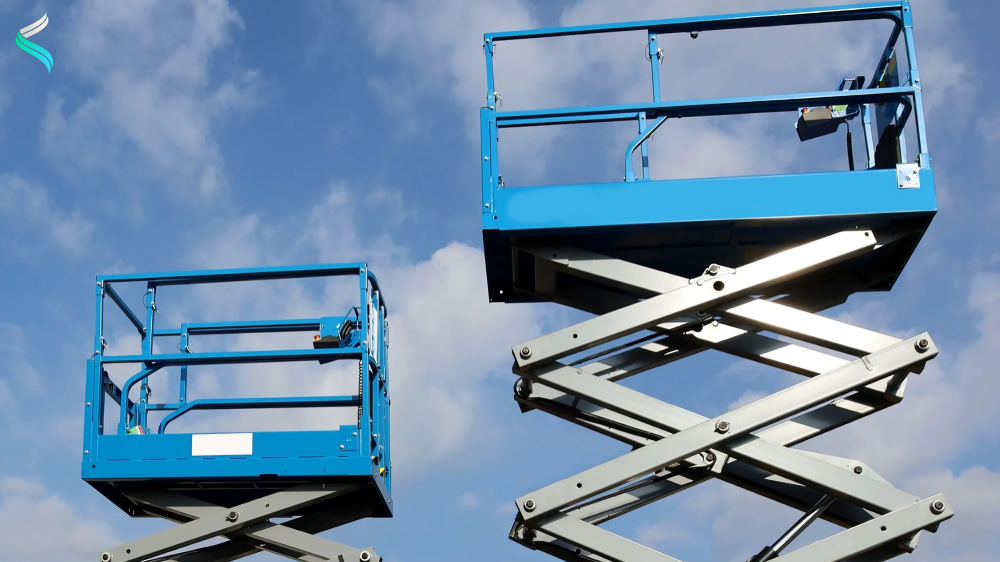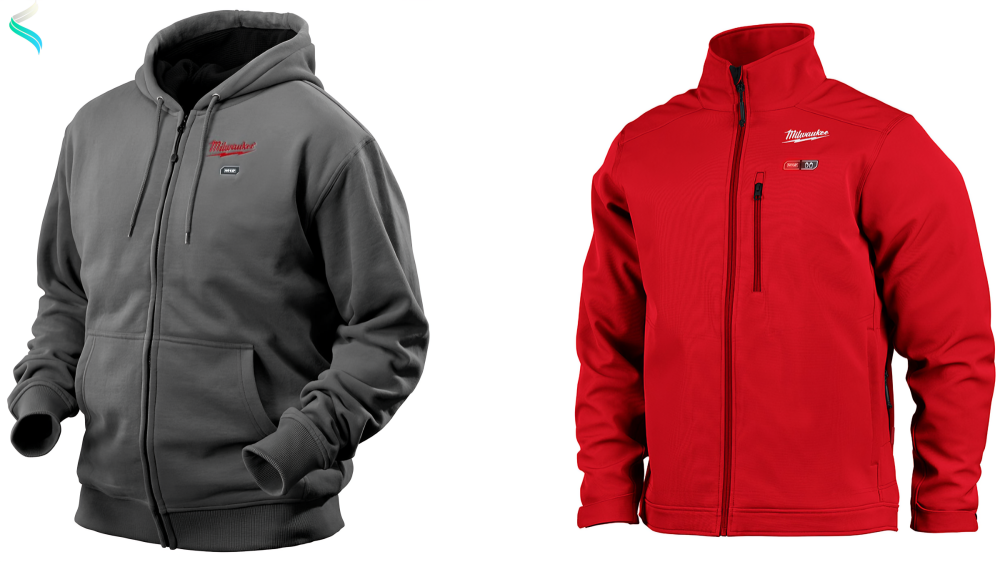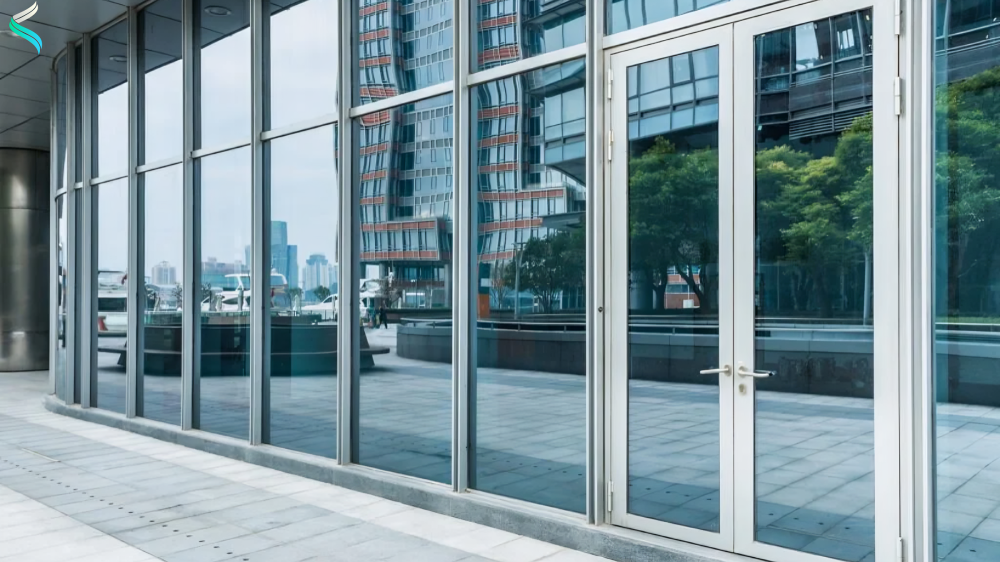Introduction
In construction, warehousing, and maintenance, access to elevated areas is often necessary. The Scissors Lift has become an indispensable tool in industries where elevated workspaces are routine. Scissors Lift is a specialized piece of machinery designed to lift workers, equipment, and materials to various heights safely and efficiently. Its name comes from the crisscrossing metal supports, which extend to raise the platform and collapse to lower it, resembling the blades of a pair of scissors.
In this comprehensive guide, we’ll explore the essentials of the Scissors Lift—the different types, popular models, and wide-ranging applications. Understanding these aspects will help users make informed choices, ensuring safety and efficiency in the workplace.
What is scissors Lift?
Scissors Lift is an aerial work platform that provides a stable, elevated workspace for tasks requiring vertical reach. The structure’s unique, crisscrossing mechanism allows for a smooth and stable lift. Operators can access work areas at varying heights, making Scissors Lifts highly adaptable.
This equipment is essential in numerous industries, such as construction, maintenance, warehousing, and retail. Different Scissors Lift models cater to specific needs and environments, allowing for safe and convenient access to hard-to-reach places.

Types of Scissors Lifts
Understanding the types of scissors lifts is crucial for choosing the right model for the job. There are several categories based on the power source, lift capacity, and intended use. Here’s a breakdown of the number one kinds:
Electric Scissors Lift
Electric Scissors Lifts are ideal for indoor use, providing a quieter and cleaner operation without emissions. They are commonly used in warehouses, shopping malls, and maintenance areas. Electric Scissors Lifts generally have a more compact design, allowing them to fit through doorways and operate in tight spaces. This type of Scissors Lift is best suited for smooth, level surfaces.
Diesel-Powered Scissors Lift
Diesel-powered Scissors Lifts are designed for outdoor use and are suitable for rugged terrain. These lifts have a larger platform size and higher load capacity, making them ideal for construction sites. With their powerful engines, diesel Scissors Lifts can reach greater heights and endure more challenging working environments than electric models.
Rough Terrain Scissors Lift
A Rough Terrain Scissors Lift is designed to handle uneven, outdoor surfaces, featuring rugged tires, four-wheel drive, and greater stability. These lifts can reach heights up to 50 feet or more, depending on the model. Equipped with heavy-duty engines, Rough Terrain Lifts are perfect for construction, landscaping, and any other outdoor applications where ground conditions are less than ideal.
Hydraulic Scissors Lift
Hydraulic Scissors Lifts use hydraulic fluid to perform the lifting mechanism. When pressure is applied, the fluid moves through the system, causing the lift to rise. Although slower than electric models, hydraulic Lifts offer consistent performance and are often used in both indoor and outdoor settings.
Pneumatic Scissors Lift
A Pneumatic Scissors Lift uses air pressure to elevate the platform, which makes it one of the most eco-friendly options. It doesn’t require fuel or electricity, meaning it has zero emissions, making it highly suitable for environments with strict air quality regulations.
Popular Scissors Lift Models
Several manufacturers produce high-quality Scissors Lifts tailored for different applications. Here are a few popular models known for their reliability, functionality, and safety features.
Genie GS-1930 Electric Scissors Lift
The Genie GS-1930 is a compact, electric Lift popular for indoor use. With a maximum platform height of 19 feet, this model is ideal for maintenance, installation, and other indoor tasks. Its small footprint allows for easy maneuverability in tight spaces, and it fits through most standard doorways.
JLG 530LRT Rough Terrain Scissors Lift
Designed for outdoor environments, the JLG 530LRT offers a platform height of 53 feet and rugged tires that provide stability on uneven surfaces. With a large platform, this Lift can support multiple workers and heavy equipment, making it ideal for large-scale construction projects.
Skyjack SJIII 3226 Electric Scissors Lift
The Skyjack SJIII 3226 is a versatile electric Lift that reaches a working height of 32 feet. Known for its durability and ease of use, this model is popular in maintenance and warehousing. The SJIII 3226 is equipped with self-centering scissor arms, which enhance stability and safety.
Haulotte Compact 14 Electric Scissors Lift
The Haulotte Compact 14 provides a working height of up to 46 feet and is suitable for both indoor and outdoor work. Its compact design makes it ideal for tight spaces, and it includes safety features such as pothole protection and an emergency lowering system.
MEC 60-J Diesel Lift
This high-capacity, diesel-powered Lift can reach heights up to 60 feet, making it suitable for construction and heavy-duty outdoor applications. MEC’s models are known for their durability and load capacity, and the 60-J is a top choice for jobs requiring large platforms and extended reach.

Applications of Lifts
Lifts are used in a wide variety of applications, thanks to their ability to provide a stable platform at different heights. Here’s an overview of common uses across different industries.
Construction and Building Maintenance
In construction, Lifts are invaluable for tasks that involve reaching high areas, such as painting, installing windows, and handling electrical work. Diesel and Rough Terrain Lifts are common on construction sites due to their strength and outdoor abilities.
Warehousing and Inventory Management
In warehouses, electric lifts are frequently used to move inventory to higher shelves and conduct routine maintenance. Their compact design allows them to navigate narrow aisles and reach items stored at high levels.
Retail and Shopping Centers
Shopping malls and retail centers use electric Lifts for maintenance tasks like changing signage, installing decorations, and repairing lights. These Lifts are quiet and emit no fumes, making them safe for indoor use around customers.
Manufacturing and Industrial Facilities
In manufacturing facilities, Lifts help with machine maintenance, assembly line work, and overhead repairs. Hydraulic Lifts are popular in these settings for their durability and load capacity.
Event Setup and Maintenance
For concerts, trade shows, and large events, Lifts assist with setting up lighting, audio equipment, and banners. They allow crews to efficiently reach and install equipment high above the ground, enhancing both speed and safety.
Factors to Consider When Choosing Lift
Selecting the right Lift depends on several factors, including the type of job, location, and budget. Here are some essential considerations:
Height Requirements
Consider the maximum working height needed for the job. Lifts range from compact models with a reach of 10–20 feet to large, rough terrain lifts that can exceed 50 feet.
Load Capacity
Ensure the Lift can support the weight of workers, tools, and materials. High-capacity models are ideal for construction, while lighter models work well for indoor maintenance.
Environment
Indoor jobs typically require electric lifts to prevent fumes and noise, while outdoor work may call for diesel or rough terrain models.
Budget
Choose a model that balances functionality with cost. Renting or leasing may be viable options for short-term projects, while purchasing might be more economical for ongoing work.
Safety Features
Look for Lifts with built-in safety features like pothole protection, emergency lowering systems, and guardrails. Ensuring these safety mechanisms are in place helps prevent accidents and protect workers.

Safety Tips for Operating Lifts
Operating Lift requires strict adherence to safety protocols to prevent accidents and ensure worker safety. Here are some key safety tips:
- Conduct Pre-Use Inspections: Inspect the Lift before each use, checking for any visible damage, leaks, or malfunctions.
- Use Safety Harnesses: Workers should wear safety harnesses and attach them to designated anchor points on the lift.
- Avoid Overloading: Never exceed the lift’s weight capacity. Overloading can destabilize the lift and increase the risk of accidents.
- Monitor Weather Conditions: Outdoor Lifts should not be used in high winds or severe weather, as they can cause instability.
- Train Operators: Only trained and certified personnel should operate Lifts to ensure proper handling and emergency response.
More: Reddit
Conclusion
The Scissors Lift is a versatile, efficient device important for reaching multiple regions in numerous industries. Understanding the different types, models, and applications of Scissors Lifts can help you choose the right lift for your needs, ensuring a safe and productive work environment. Whether you’re using an electric lift indoors, a rough terrain lift on a construction site, or a hydraulic model in manufacturing, the Lift continues to be a valuable asset across multiple sectors.
FAQ: Scissors Lift Essentials – Types, Models, and Applications
- What is scissors Lift?
- Scissors Lift is an elevated platform that is used to raise or lower workers, tools, and materials to elevated areas safely. The platform is supported by a mechanism that resembles the crisscrossed blades of a pair of scissors, therefore the name. These lifts come in various models, including electric, diesel, and rough terrain versions, and are used in industries such as construction, warehousing, maintenance, and retail.
- How do Scissors Lifts work?
- Scissors Lifts operate by using a system of crisscrossing metal arms that extend and retract as hydraulic or mechanical power is applied. This mechanism allows the platform to thrust upwards and fall easily. The operator controls the movement using a control panel located on the lift or via remote control.
- Can I use scissors Lift outdoors?
- Yes, Scissors Lifts designed for outdoor use, such as diesel-powered and rough terrain models, are built to withstand rugged conditions. These lifts feature heavy-duty tires and powerful engines that allow them to operate on uneven surfaces, making them ideal for construction sites, outdoor maintenance, and other tough environments.
- How high can scissors Lift reach?
- Scissors Lifts come in a variety of sizes, with platform heights typically ranging from 10 feet for compact models to 60 feet or more for larger, rough terrain models. The specific height depends on the model, with taller lifts being designed for large-scale construction or industrial applications.
- Is it better to rent or buy scissors Lift?
- The decision to rent or buy scissors Lift depends on the frequency and type of use. Renting is an excellent option for short-term projects or if you only need the lift occasionally. However, purchasing scissors Lift is more economical for companies or individuals who require consistent access to elevated areas over a longer period.











